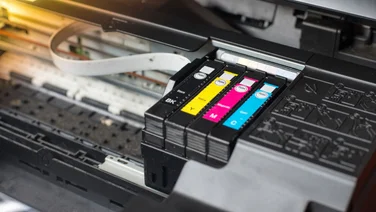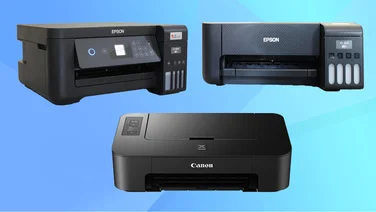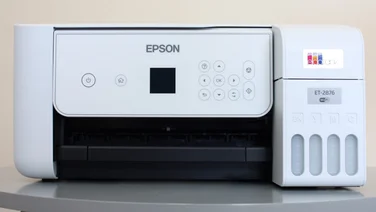To help us provide you with free impartial advice, we may earn a commission if you buy through links on our site. Learn more


In January this year Kodak filed for bankruptcy protection and announced that it would no longer be making digital cameras. Happily the company is still making printers, and has recently launched two new inkjet multifunction peripherals (MFPs): the ESP 1.2 and the ESP 3.2. Both are reasonably basic devices for home users, with the chief difference between them that the ESP 3.2 has a colour touchscreen and the cheaper ESP 1.2 makes do with more basic controls.

The ESP 3.2 looks subtly better than the ESP C310 that it replaces, but it’s still a basic design built from uninspiring black plastic with a splash of Kodak yellow. There’s a sloped paper tray at the rear and a chunky fold down tray at the front. The scanner lid is on sturdy hinges, but these don’t allow it to close flat on thick originals such as a book or magazine. There are slots for three memory card types, but the printer wouldn’t recognise either a FAT-formatted 512MB SD or a FAT32 16GB SDHC card.
The printer’s heads and ink tanks need to be slotted into place before you can begin printing, at which point we quickly discovered that the ESP 3.2 is quite noisy by inkjet standards, particularly when printing at draft quality. Similarly, the scanner head makes quite a racket as it moves across the platen, particularly during low-resolution scans and previews. In both cases using higher quality settings slows things down and reduces the volume.
In our tests, the printer produced reasonably good-quality black text, but it was let down slightly by a subtle horizontal tearing on one line. In general it was noticeably faster than outgoing ESP C310, but it still wasn’t a particularly quick printer, delivering its default quality prints at 7.7 pages per minute (ppm). Draft printing seemed quite rapid, but we experienced repeated paper jams and mis-feeds when trying to complete our 25-page timed test. After four failed attempts we gave up.
In colour the printer was quick to deliver photos, taking just four minutes to print six borderless postcard-sized shots, but slow when printing graphics on plain paper: it completed our 24-page test at just 3ppm. Photo quality was unremarkable, but plain paper prints were more impressive, let down only by some banding in areas of solid colour. The results from the scanner were about average, with fairly good colour accuracy and sharpness, but the printer was less good at preserving the detail among the darkest shades of an original.

The ESP 3.2 supports printing via the cloud and from smartphones or tablets, but there’s no AirPrint support, so iPad and Android users will need to download the free Pic Flick app. This is easy to use and worked well, but it’s focused on photos. Printing other documents requires Document Print which isn’t as slick and is only available for Android.
Kodak is keen to stress its printers’ low running costs, and the ESP 3.2 is one of the cheapest home inkjets we’ve seen to run. There’s little else to commend it, however, so unless cheap ink is critical we’d recommend the similar but better Canon Pixma MG4150, which is now available for just £70.






